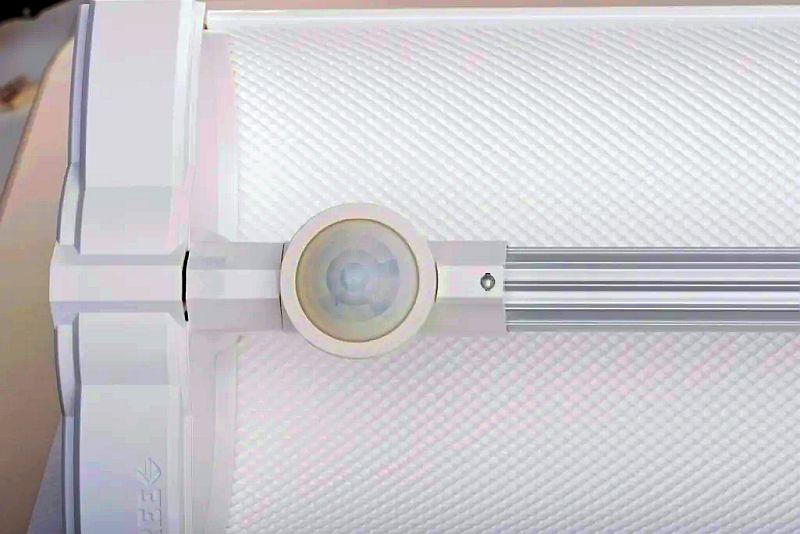
Luminaire-level lighting control or integrated control luminaire is a term that refers to an LED luminaire that includes integrated sensors and controllers. These products provide an alternative to traditional wall-mounted or ceiling-mounted sensor installations. Integrated controls are possible due to the rapid and ongoing trend of miniaturization and standardization of interfaces and form factors, which makes it relatively simple to include these devices in luminaire designs.
Integrated control luminaires can be configured to operate as part of a stand-alone group that is not connected to a central panel or building control system. In this configuration, the local controller commands dimming levels based on occupancy and daylight input from sensors embedded in the set of luminaires. This type of implementation reduces wiring and potentially eliminates the need for a central controller, while also providing the individual-level control needed to comply with increasingly stringent energy regulations.
Luminaires can also be configured as part of a larger lighting control or building management system. In this configuration, the embedded controller provides input directly to the overall system controller. This type of implementation provides the networking of luminaires or groups of luminaires used to implement a lighting scheme and, in the case of building management systems, a way to coordinate the response of other systems, most notably HVAC, with Lighting response. Additionally, energy consumption data can be collected for monitoring and analysis purposes.
In addition to LED light sources and drivers, most integrated control luminaires include occupancy sensors, photosensors, control functions, and wired or wireless connectivity. Other sensors can also be combined, including temperature, humidity, etc. Control functions can be embedded in the driver or implemented in separate components. A radio transmitter/receiver for wireless connection may be included. Additionally, configuration software using a mobile app is available for systems with a centralized network.
Luminaire manufacturers favor integrated control luminaire products because they simplify the manufacturing process and reduce overall manufacturing costs. Integrated control light fixtures are attractive in facilitating building control systems that monitor and make decisions based on sensor input to comply with codes and improve energy savings.
Primary energy codes adopted by states to varying degrees include the International Energy Conservation Code (IECC), American Society of Heating, Refrigerating and Air-Conditioning Engineers (ASHRAE) 90.1, Energy Standards for Buildings Except Low-Rise Residential Buildings, California Energy Commission (CEC) Title 24, Residential and building energy efficiency standards for non-residential buildings, as well as the Canadian NECB (National Energy Code for Buildings of Canada). These specifications all require the implementation of occupancy sensing, dimming, and daylight response to varying degrees, with each new version containing increasingly stringent requirements.
One of the main selling points of integrated control lamps is the energy savings that can be achieved compared to non-connected lighting. Primarily due to potential energy savings, the U.S. Department of Energy predicts that by 2035, connected LED lighting (including the category of integrated control luminaires) is expected to increase to 30 percent of commercial installations.

For example, a 2020 study sponsored by the Northeast Energy Efficiency Coalition sought to quantify the energy savings that could be achieved. The study was conducted in a test environment containing nine luminaires in a 27' x 33' space and concluded that, compared to the energy savings achieved with LED lighting alone, including control Measures can save 50-74% of energy. Unsurprisingly, energy savings appear to correlate with the functional complexity of the implementation. It is important to note that research conducted in a controlled environment may not represent results in a real-world setting.
Integrated control lamps also have significant disadvantages. First, these products have high upfront costs and unreliable return on investment, depending on how well the product features are implemented and the customer's long-term usage. The implementation of these capabilities also inevitably leads to increased project complexity, a feature that often leads to customer frustration and misuse or obsolescence of the system. Finally, not all customers require the complex functionality offered by integrated control lamps. The indiscriminate specification of these products is not a substitute for a well-designed lighting system based on customer needs and a lighting system that is practical and affordable for them.